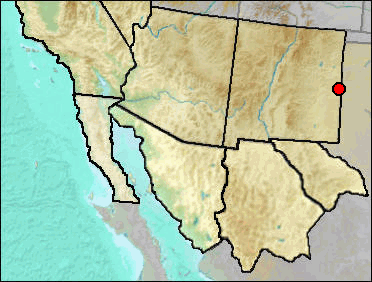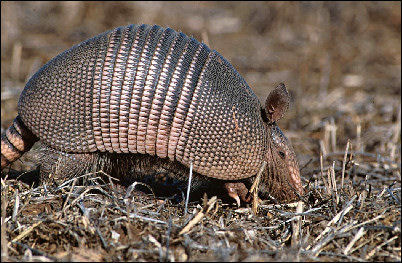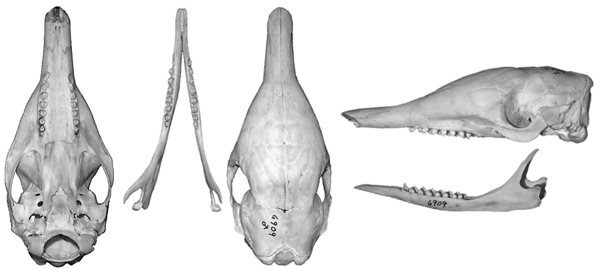
Class Mammalia
Order Cingulata
Family Dasypodidae

A few primarily eastern taxa reached into our region, apparently moving west along drainages that during the Pleistocene shared more or less continuous habitat with more eastern areas. The Beautiful Armadillo is one such, along with the Raccoon and probably the Eastern Gray Squirrel or the Fox Squirrel. The only records for these forms are from the Blackwater Draw area of extreme eastern New Mexico.
 Dasypus bellus was morphologically very similar to the living
Nine-banded Armadillo (Dasypus novemcinctus) except considerably larger; in the
Late Pleistocene, they were about twice the size of D. novemcinctus
(Kurtén and Anderson 1980). A drawing comparing the two is shown on the Illinois State Museum
site.
Dasypus bellus was morphologically very similar to the living
Nine-banded Armadillo (Dasypus novemcinctus) except considerably larger; in the
Late Pleistocene, they were about twice the size of D. novemcinctus
(Kurtén and Anderson 1980). A drawing comparing the two is shown on the Illinois State Museum
site.
Fig. 1. Nine-banded Armadillo (Dasypus novemcinctus). Photo by John and Karen Hollingsworth, courtesy of the U.S. Fish and Wildlife Service.
Armadillo teeth are simple pegs and not differentiated morphologically into incisors, canines, premolars, and molars. The armor of armadillos is of dermal bone and consists of articulated plates and overlapping plates joined by flexible connective tissue; the armor proper is overlain by dermal and epidermal tissue. Virtually all of the light spots that can be seen in Fig. 1 are on separate armor elements. If the armor becomes disarticulated after death, a single animal can produce hundreds of recognizable fossils.
The present day smaller armadillo is unknown as a fossil in the U.S. except for a possible Texas occurrence based on a single scute, possibly actually from a small D. bellus (Kurtén and Anderson 1980). Its present day U.S. distribution results from a combination of introductions into Florida and natural expansion from south of the border in the late 1800s. Slaughter (1975) hypothesized that cold temperatures to the north and dryness to the west limit the geographic range of D. novemcinctus and likely were as limiting to D. bellus.

Fig. 2. Skull and mandibles of the Nine-banded Armadillo. UTEP Biodiversity Collections image.
Sites.
Late Wisconsin: Blackwater Draw Fauna (Slaughter 1975).
Literature. Kurtén and Anderson; Slaughter 1975.
Last Update: 5 Mar 2013